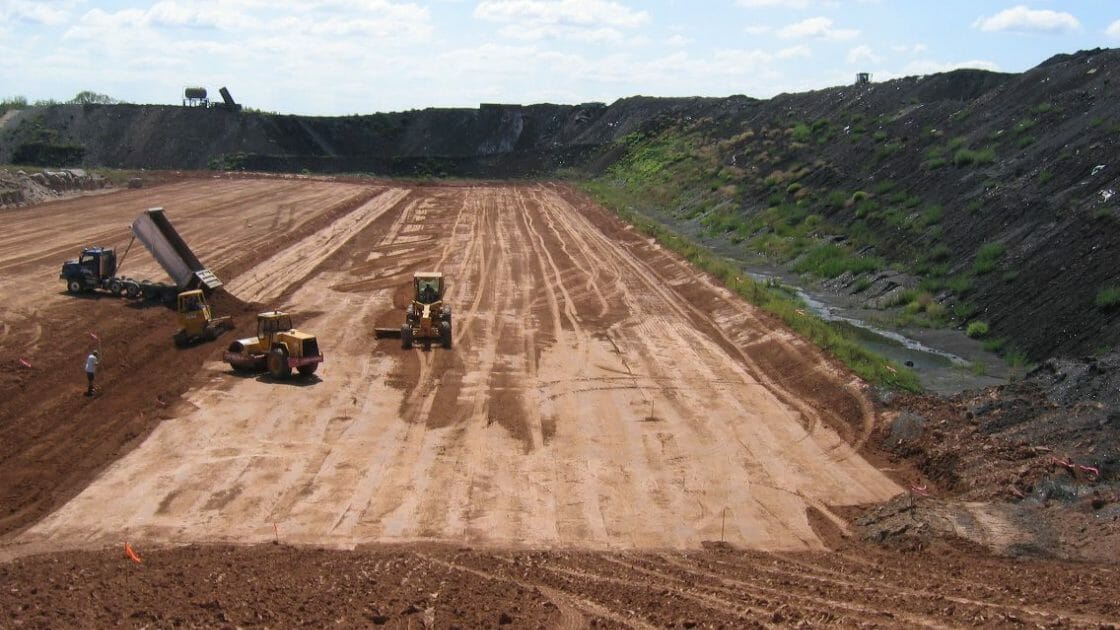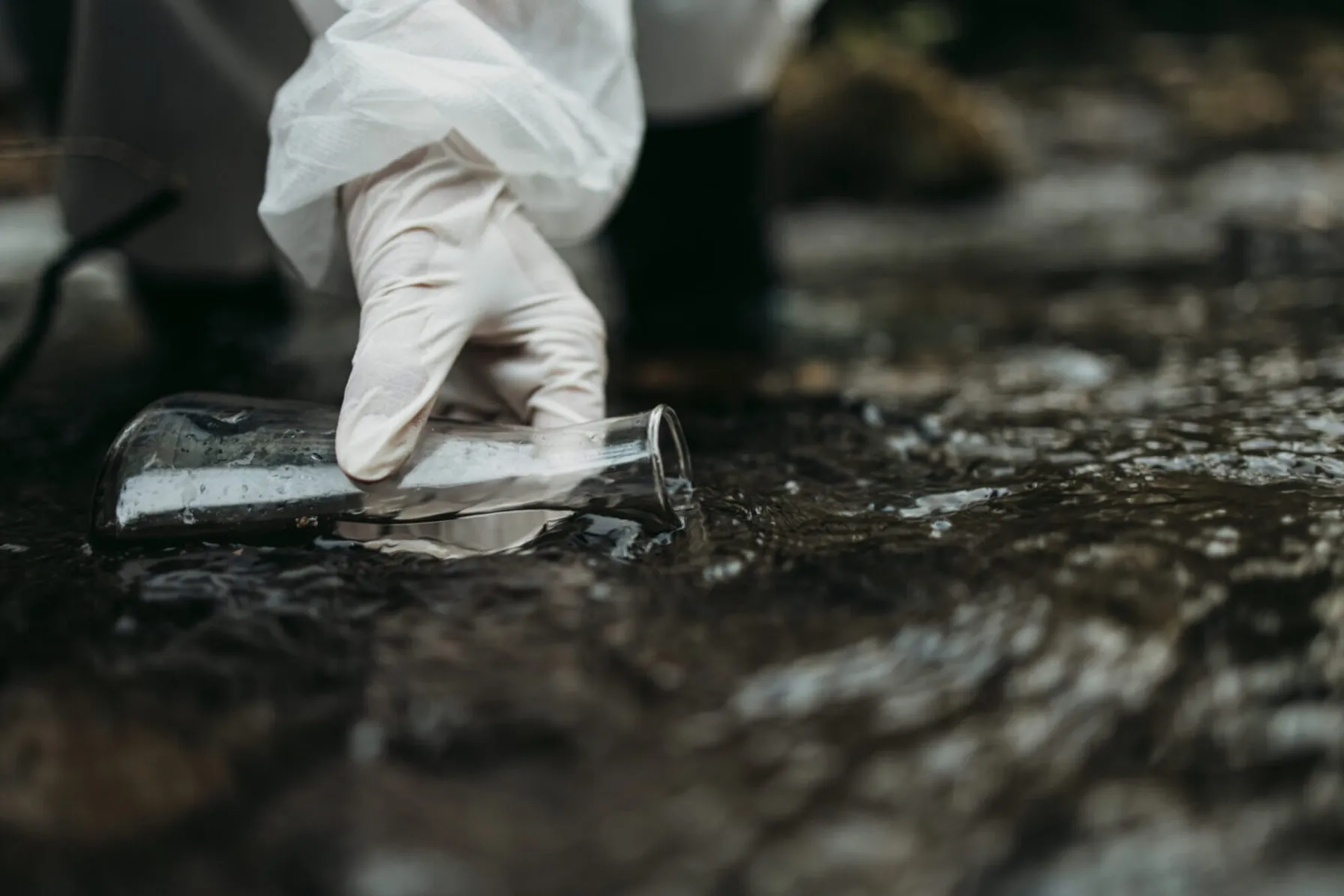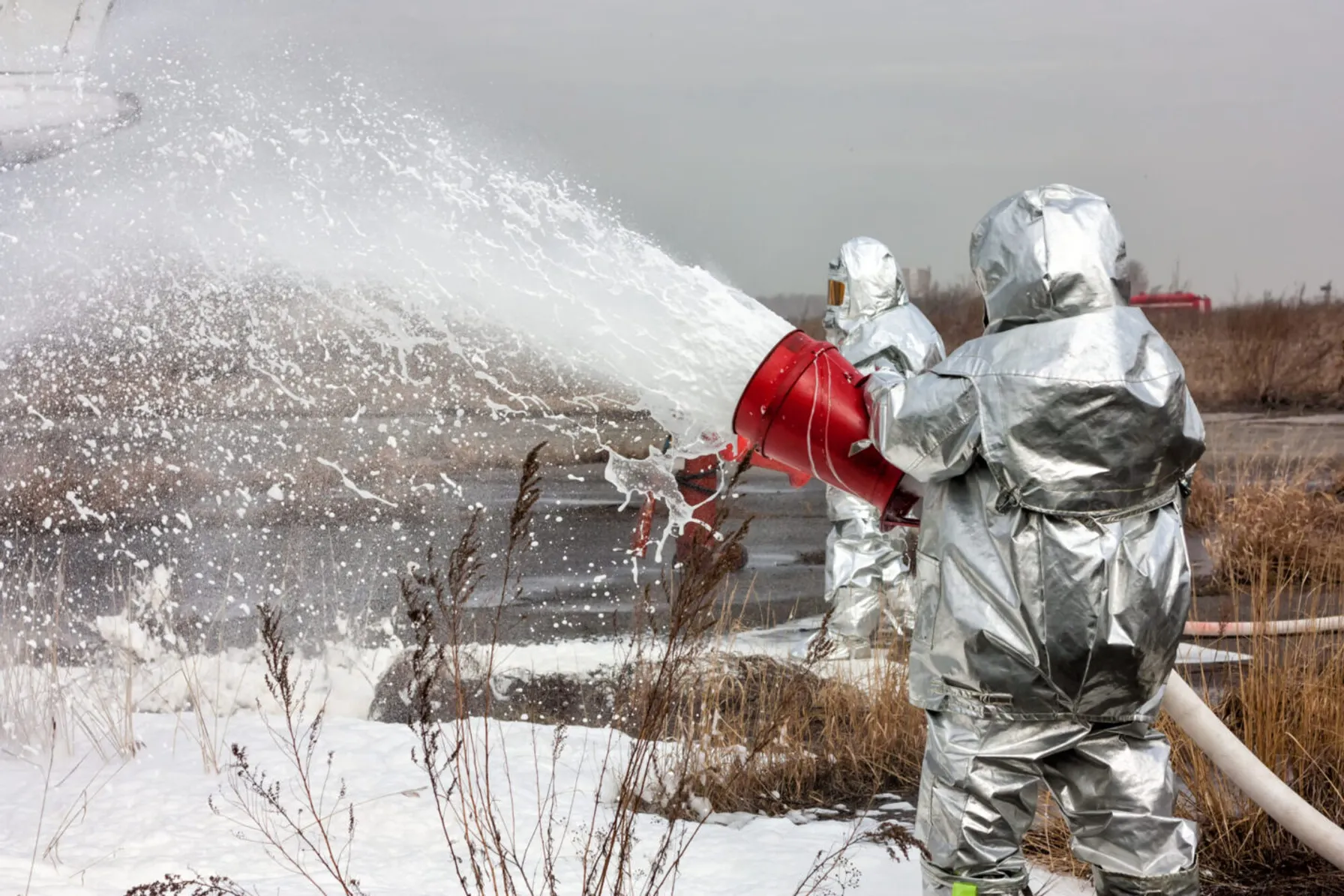Author: Elizabeth Denly & Emily Larson | July 8, 2022
With over 9,000 per- and polyfluoroalkyl substances (PFAS) in the environment, source identification and environmental liability are complicated. One of the major challenges of PFAS is the high cost associated with investigations and clean ups. In the determination of responsible parties, forensics and source identification will be necessary to detect the unique PFAS chemical signatures.
Manufactured since the 1940s, these synthetic compounds are used in a variety of industrial, commercial, and consumer products and processes. While aqueous film-forming foam (AFFF) is one of the major sources of some of the largest and most complex PFAS-contaminated sites, there are numerous other sources of PFAS including metal plating, biosolids, textiles, leather and apparel, plastics, paper and packaging, cleaning products, pesticides and personal care products. As a result of its widespread uses and pervasive presence, many PFAS investigations require the use of forensics or chemical signatures to identify sources and fate and transport scenarios.
Understanding Site and Operational History
The first step in our forensics evaluations includes generating an understanding of the potential sources of PFAS at the site of interest and nearby sites. Forensics is not just about chemistry, but also involves looking into operational history and potential nearby sites or sources that may be affecting the site of interest. Understanding the potential types of industries or products that manufacture and use PFAS is an important part of this evaluation.
The unique chemical signatures from PFAS mixtures provide forensic markers to help determine the source of a PFAS release. The chemical compositions for the paper and food packaging differ from those for textile and leather, which vary from AFFF, metal plating, and wastewater treatment plants and landfills. With a proprietary analyte comparison mapping tool, TRC can help determine the source of PFAS and chemical trends across large spatial areas.
We Understand Signatures
Looking at chemical signatures is a first step in generating information on different sources. The signatures are used to not only identify various characteristics of the source, but also different fate and transport scenarios. For example, we may see the breakdown of PFAS precursors further downstream in a plume or we may see a change in signatures due to co-mingling of more than one source along the length of a plume.
Therefore, PFAS signatures cannot be evaluated in isolation. TRC uses a multiple lines of evidence approach and provides careful consideration to differentiate complex mixtures of PFAS and distinguish sources of PFAS in environmental media. TRC considers the following:
- Chemical signatures/fingerprints
- Hydrogeologic data, site operational history, timing of releases, and other site data
- Unique fate and transport properties of PFAS
- Transformation products of precursor PFAS
- Mixing, dilution and comingled plumes
- Diagnostic ratios that can help distinguish legacy AFFF from modern fluorotelomer AFFF sources, for example (some diagnostic ratios can be indicative of more than one source)
TRC has nationally recognized PFAS experts who understand the various targeted and non-targeted PFAS analyses as well as laboratory procedures which can greatly impact the final reported data. TRC’s experts can help determine the following at your Site:
- Appropriate PFAS analyses for site-specific conditions and media
- PFAS target analyses
- Total oxidizable precursor (TOP) assay
- Non-targeted PFAS analyses
- Total organic fluorine analyses
- Specific PFAS to select for signature evaluation
- We are beginning to understand more and more when there are specific PFAS that are indicative of a particular product or industry so we can ensure that the selected list of PFAS for analysis is inclusive of these marker compounds
- Diagnostic ratios can be determined based on the specific list of PFAS included in the analysis
- The choice of PFAS selected for signature evaluation must be carefully considered
- Impact of differences in laboratory methodologies from standard operating procedures
- Effect of PFAS transformation on chemical concentrations/fingerprints
- A very large group of transformation intermediates can present a challenge to data interpretation
- We have used TOP Assay to help us determine the ultimate source of AFFF at airport sites because of the transformation properties of some of the different formulations of AFFF
- Effect of PFAS sorption to solids on chemical concentrations/fingerprints
- TRC works with our laboratories to ensure that we understand how samples with elevated levels of particulates or high turbidity samples are handled in the laboratory. Because some of the longer-chain PFAS and more so for the sulfonates like PFOS, can adsorb to solids, the resulting PFAS concentrations and fingerprints can greatly vary depending on how the laboratory prepares these samples, ultimately affecting your forensics interpretation.
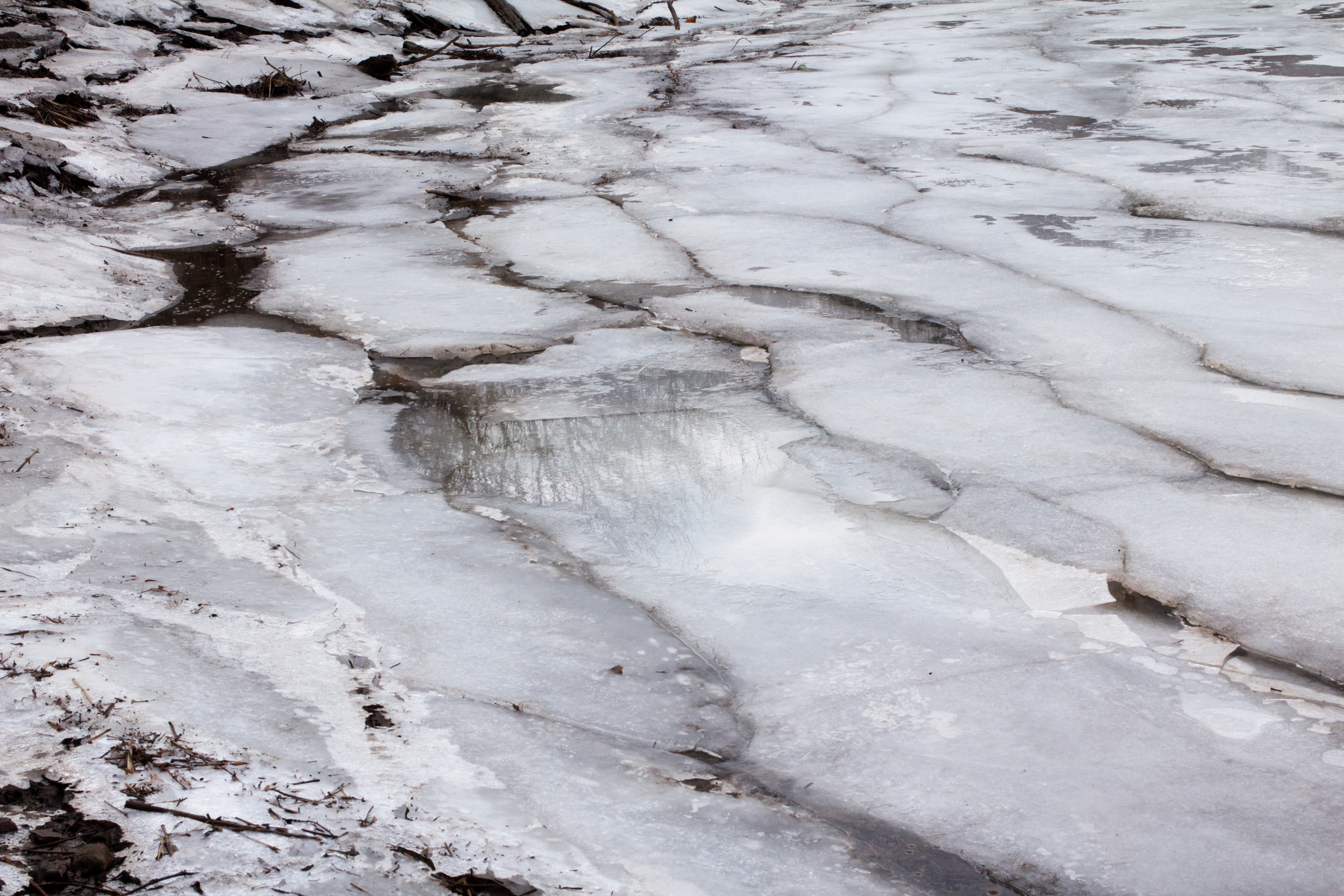
What Can TRC Distinguish on Your Site?
TRC has worked on numerous PFAS sites where various sources have been identified. When using the various tools discussed above, trends in the PFAS chemical concentrations can be determined, and based on their spatial relationship to the site of concern, can be differentiated as on-site or off-site sources. Furthermore, hot spots can also be identified at a site and their chemical signatures can be compared to various nearby sources. Finally, our evaluations can help determine if additional information and/or samples need to be gathered to further differentiate site sources and fill data gaps.
Let TRC help you navigate PFAS sources, fate and transport and transformation at your site through thoughtful analyses and expert interpretation to minimize your potential liability.
Adapt to
Change
Partner With TRC’s Tested Practitioners
Sharing Our Perspectives
Our practitioners share their insights and perspectives on the trends and challenges shaping the market.

Fostering an Enjoyable and Resilient Project Management Career
March 10, 2025
In his final contribution to EM Magazine, TRC’s David Elam shares his thoughts on the health, well-being and success of project managers everywhere. These takeaways go beyond skills and habits in the workplace, and explore how project managers can align their lives outside of work with their professional goals.
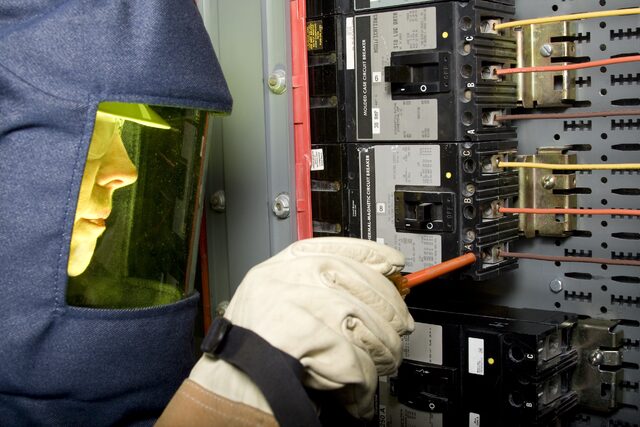
OSHA Addresses Arc Flash Hazards and Electrical Safety in the Workplace
March 5, 2025
OSHA releases guidance document on “Addressing Arc Flash Hazards in a Safety and Health Program” and the alignment with NFPA 70E standard for Electrical Safety in the Workplace. The Occupational Safety and Health Administration (OSHA) recently published a guidance document that aligns with the National Fire Protection Association (NFPA) 70E standard for Electrical Safety in the Workplace. The guidance document outlines how to use a management system to protect workers from arc flash hazards by focusing on worker participation, hazard identification, evaluation and control methods.

Changes to EPA’s Risk Management Program (RMP) Regulations Are Coming
April 14, 2023
Changes to the Risk Management Program (RMP) regulations were signed into a final rule on February 27, 2024, by EPA Administrator Michael S. Regan.

EPA Finds Trichloroethylene Presents Unreasonable Risk in Final Risk Evaluation
April 6, 2023
On Jan 9, 2023, the United States Environmental Protection Agency (EPA) revised the Toxic Substance Control Act (TSCA) to reflect a new risk determination for trichloroethylene (TCE).

Routinely Evaluating the Health & Effectiveness of Integrated Systems to Manage EHS/ESG Risks – Part I
March 1, 2023
Once established, an EHS/ESG management system must be routinely evaluated to ensure it remains effective to identify and control risks, as well as accommodate and adjust for changes that occur to/within the organization.

QA and Chemistry Services
February 23, 2023
TRC offers many QA and Chemistry services including data usability assessments, limited and full data validation reports, quality assurance project plan preparation, selection of appropriate analytical methodologies and laboratory audits.

PFAS Fate and Transport: Conceptual Site Models
February 23, 2023
The conceptual site model describes site-specific sources, release and transport mechanisms, exposure media, exposure points, exposure pathways and routes and potential human and/or ecological receptor populations.
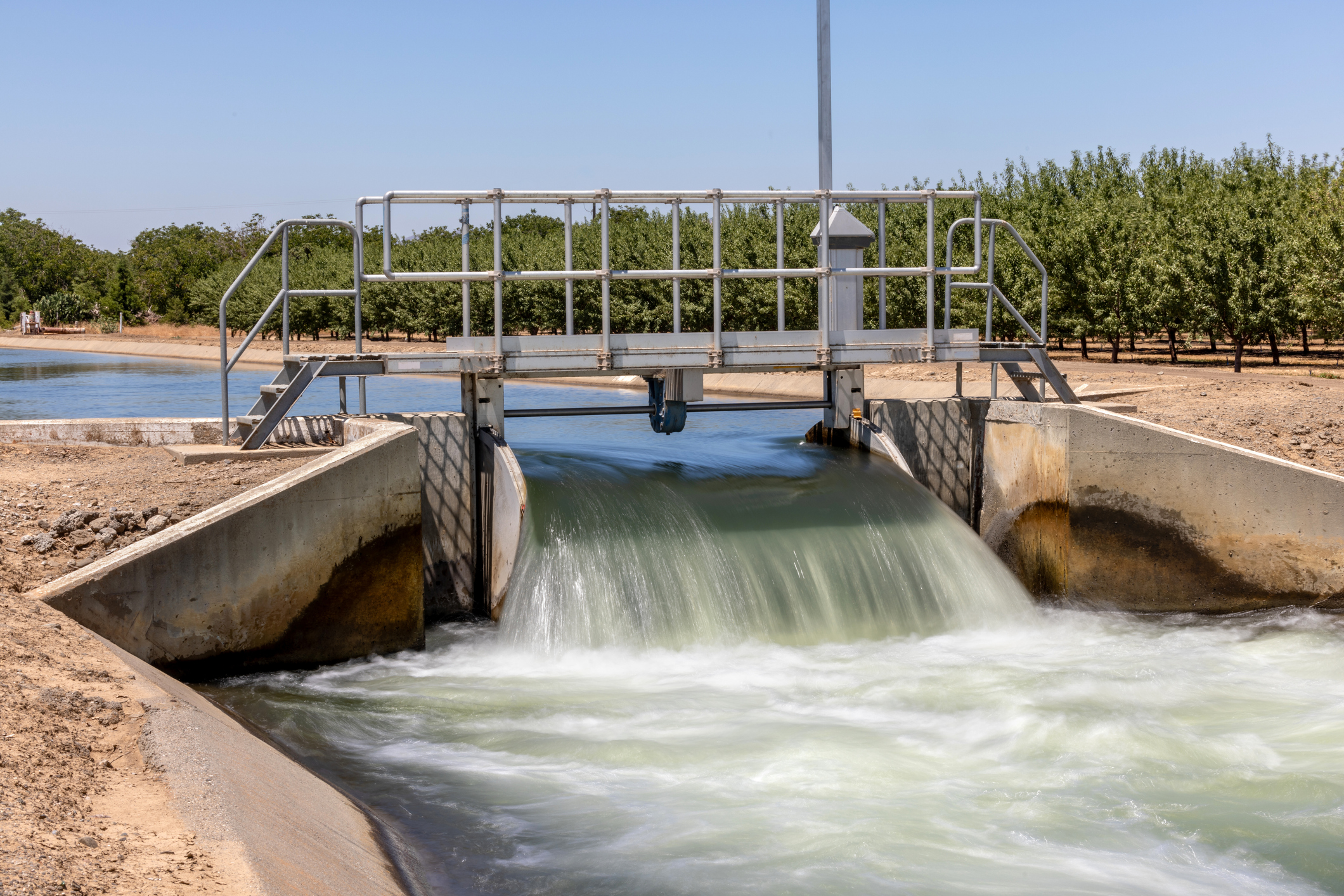
EPA Publishes Effluent Guidelines Program Plan 15
February 14, 2023
The EPA announced updated effluent limitations guidelines under Plan 15, focusing on the evaluation and rulemaking process for per- and polyfluoroalkyl substances (PFAS) discharges.
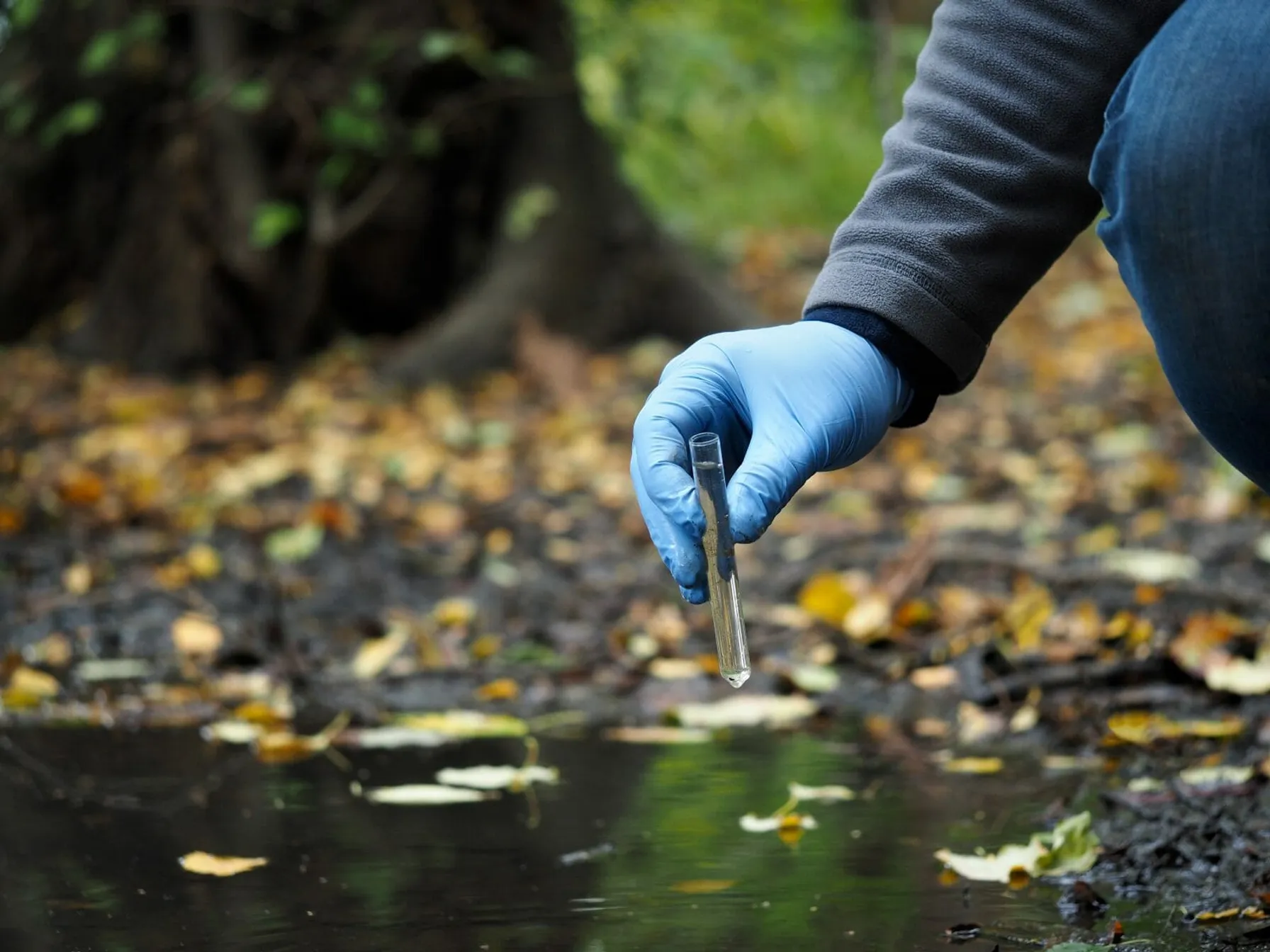
PFAS: Remedial Approaches
February 8, 2023
Remediating Per- and poly-fluoroalkyl substances (PFAS) from the soil and water requires effective techniques and innovative technologies. TRC’s experts are well versed in several remediation strategies intended to remove PFAS and prevent re-exposure.

Proactive Enforcement is Key in the EPA FY2022-2026 Strategy
October 19, 2022
A core element of the EPA FY2022-2026 Strategic Plan focuses on environmental compliance.

Optimizing EHS/ESG Information Management and Reporting Systems by Leveraging Innovative Digital Technology Solutions
August 10, 2022
A single, integrated enterprise wide EHS/ESG IMS can significantly improve performance and communicate progress towards organizational requirements and goals.

Integrating Sustainability, Digital Connectivity and Design Optimization in Wastewater Treatment Systems
June 20, 2022
Some organizations rarely think about water and wastewater treatment, until there is a problem. American industry depends on the ability to treat wastewater discharges while complying with regulatory standards and addressing emerging contaminants. If wastewater treatment fails, our environment is negatively impacted, and companies are exposed to shutdowns, delays and fines.

Support an Integrated EHS/ESG Management System
June 10, 2022
WINDSOR, Conn. – TRC Companies, a digitally powered and environmentally focused global professional services firm, has been named #21 by Environmental Analyst in the 2022 Top 100 Environmental & Sustainability Consultancy Firms. “As one of the top global providers of Climate Solutions, TRC is proud to be recognized as a leader in environmental and sustainability, areas that are critically important to our clients and communities we serve,” said Christopher P. Vincze, Chairman & CEO of TRC. “Sustainability is a fundamental principle that drives our business, and we embrace the trust our clients place in us as we tackle some of the pressing energy, environmental and infrastructure challenges the world faces… making the Earth a better place to live — community by community and project by project.”

TRC Companies Pledges to Achieve Net Zero GHG Emissions by 2040
April 26, 2022
TRC Companies, a digitally powered and environmentally focused global professional services firm, announced its commitment to achieve Net Zero greenhouse gas (GHG) emissions across its full value chain by 2040, aligning with the most ambitious aim of the Paris Agreement to limit global temperature rises to 1.5 °C.

How to Use an Integrated Approach To Manage EHS and ESG Risks
April 20, 2022
WINDSOR, Conn. – TRC Companies, a digitally powered and environmentally focused global professional services firm, has been named #21 by Environmental Analyst in the 2022 Top 100 Environmental & Sustainability Consultancy Firms. “As one of the top global providers of Climate Solutions, TRC is proud to be recognized as a leader in environmental and sustainability, areas that are critically important to our clients and communities we serve,” said Christopher P. Vincze, Chairman & CEO of TRC. “Sustainability is a fundamental principle that drives our business, and we embrace the trust our clients place in us as we tackle some of the pressing energy, environmental and infrastructure challenges the world faces… making the Earth a better place to live — community by community and project by project.”

SEC Releases New Proposed Rules Requiring Public Companies to Disclose Climate Risks
April 12, 2022
On March 21, 2022, the U.S. Securities and Exchange Commission (SEC) issued its proposed rules for The Enhancement and Standardization of Climate-Related Disclosures for Investors which would require public companies in the U.S. to disclose information in their annual financial reports.
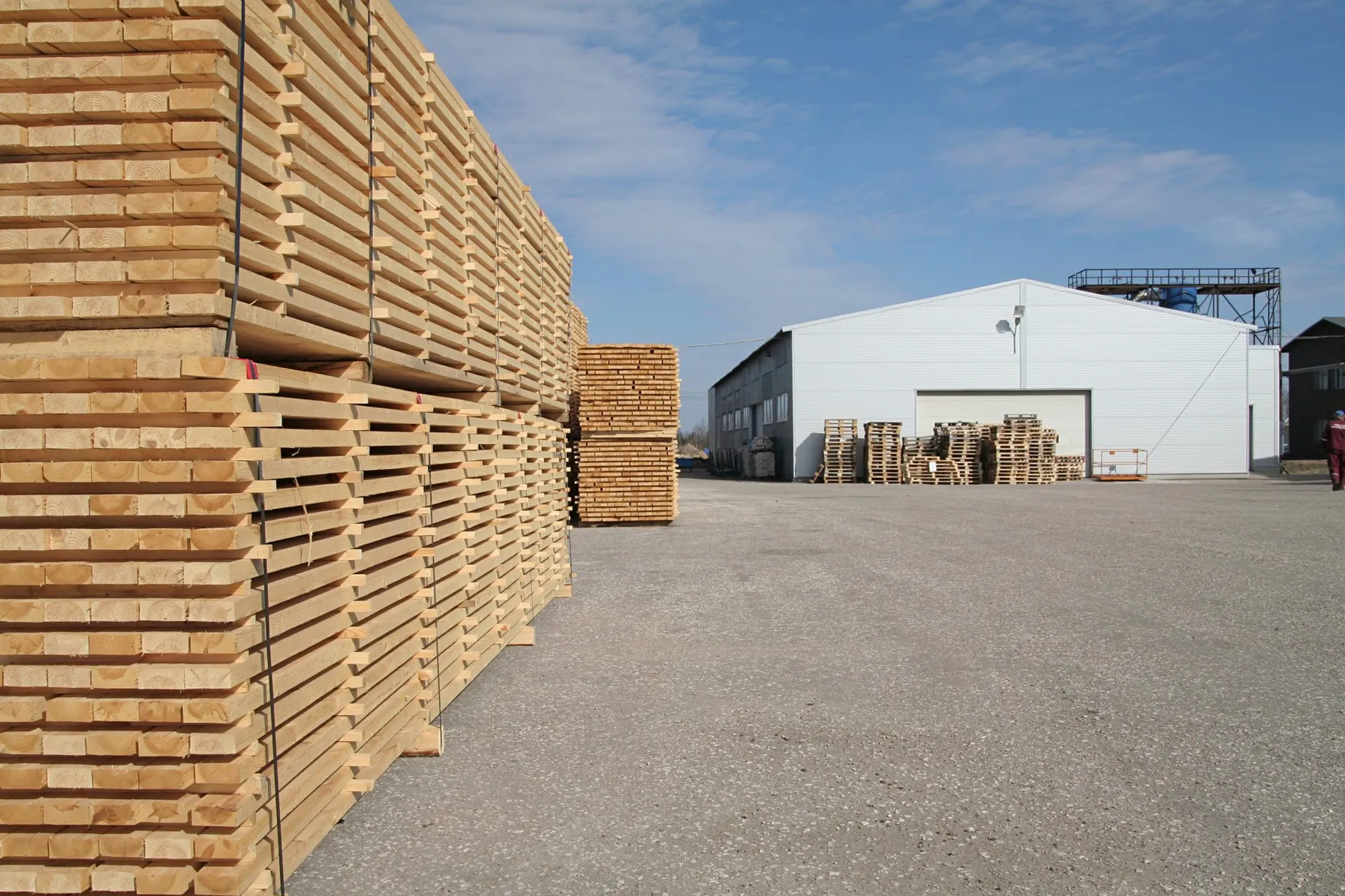
EPA Issues Information Collection Request for Plywood and Composite Wood Products Source Operators
March 17, 2022
EPA issued an Information Collection Request (ICR) to develop new emission standards for inclusion in the Plywood and Composite Wood Products (PCWP) National Emissions Standards for Hazardous Air Pollutants (NESHAP).

EPA Lifts Stay of Standards for New Lean Premix and Diffusion Flame Gas-fired Combustion Turbines
March 14, 2022
The EPA Administration signed a notice to finalize amendments to the National Emission Standards for Hazardous Air Pollutants (NESHAP) for Stationary Combustion Turbines

PFOA & PFOS As CERCLA Hazardous Substances: What Does This Mean and How Can You Be Prepared?
February 17, 2022
A plan to designate two per- and polyfluoroalkyl substances (PFAS) as “hazardous substances” under CERCLA was recently submitted by the EPA.

OSHA’s National Emphasis Program on Heat-Related Illness and Injuries
November 3, 2021
On September 20, 2021 in an OSHA National News Release, OSHA published a memorandum establishing an enforcement initiative that is designed to prevent and protect employees from heat-related illnesses and death. This initiative, which develops a National Emphasis Program (NEP) on heat inspections, is an expansion of an already existing Regional Emphasis Program (REP) in OSHA’s Region VI, which covers Arkansas, Louisiana, New Mexico, Oklahoma and Texas.

NJDEP Implements New Jersey Environmental Justice Law Through Administrative Order
October 5, 2021
On September 22, 2021, the New Jersey Department of Environmental Protection (NJDEP) Commissioner announced the issuance of Administrative Order (AO) No. 2021-25 to implement New Jersey’s Environmental Justice (EJ) Law. This order is effective immediately, and applicants seeking to site new major source facilities, renew major source permits or expand existing facilities with major source permits (e.g., Title V air permits) in overburdened communities are affected. There are more than 4.5 million people that live within 331 municipalities that are overburdened communities in the state of New Jersey.

OSHA’s Call for Comments on Mechanical Power Press Standard Changes
September 30, 2021
OSHA has recently published a call for comment regarding mechanical power presses. The reason behind OSHA’s request is that the American National Standards Institute (ANSI) consensus standard for mechanical power presses has been updated numerous times since the implementation of OSHA’s standard.

OSHA Returns to In-Person Inspections As COVID-19 Restrictions Lift
August 4, 2021
The Occupational Safety and Health Administration (OSHA) is authorized by the Occupational Safety and Health Act of 1970 (OSH Act) to assure employers provide safe and healthful work conditions free of recognized hazards and by setting and enforcing standards and providing training, outreach, education and technical assistance. OSHA has recently announced the return to in-person inspections as COVID-19 restrictions begin to lift.

Managing EHS & ESG Risks Through Integrated Systems Today and Beyond
July 22, 2021
It has been more than 50 years since the development and establishment of the federal Environmental Protection Agency (EPA) and the federal Occupational Safety & Health Administration (OSHA) which were formed to protect our environment and workplaces across the United States. Significant laws, policies and regulations followed to establish the “regulatory programs” that all applicable businesses and entities must address and meet to ensure these compliance-driven legislative programs would create a foundation to protect our society.

Elizabeth Denly
Elizabeth Denly serves as TRC’s Vice President, PFAS Initiative Leader. She is also the Quality Assurance & Chemistry Director, responsible for the creation and implementation of the Quality Management Plan and standard operating procedures (SOPs) for field sampling and documentation protocols. Ms. Denly also leads Quality Coordinator networks, which are responsible for the development and communication of quality initiatives within the organization. She is a chemist with 29 years of consulting experience encompassing field and laboratory analyses and audits, QA/QC, data validation, and consulting for regulatory agencies. Ms. Denly is a leader in ITRC’s PFAS and TPH Risk Work Groups and in TRC’s Center of Research & Expertise (CORE) Emerging Contaminants Team and received the ITRC’s Industry Member of the Year Award in 2017. She is currently focusing on PFAS, specifically the nomenclature, chemistry, sampling procedures, QA/QC, and laboratory analytical methodologies, and has a significant role in educating clients, attorneys, and regulators about PFAS. As a senior QA specialist at TRC, Ms. Denly is responsible for providing QA/QC oversight in support of a variety of environmental investigations and remediation programs including risk-based soil cleanups, ambient air monitoring, and human health and ecological risk assessments. In this role, she has directed the preparation of QAPPs, coordination with the laboratory, selection of the appropriate analytical methodologies to achieve the desired remedial standards, oversight and performance of the data validation process, and determination of the usability of the data and achievement of data objectives. Ms. Denly has provided this oversight under different regulatory programs. Read more on Ms. Denly's bio page. Please contact her at edenly@trccompanies.com.

Emily Larson
Emily Larson has more than 10 years of experience modeling the bioaccumulation of semivolatile compounds and metals in ecological systems, modeling exposure to human and ecological receptors, and preparing human health and ecological risk assessments. She has experience conducting risk assessments with emerging contaminants, specifically per-and polyfluoroalkyl substances (PFAS). In addition, she serves as a technical expert on PFAS within the intermountain region for TRC. She has experience with Superfund (CERCLA) as well as several state-led programs specifically in the Inter Mountain West and Pacific Northwest regions. Emily has worked with several clients in both the private and the public (state and federal) sector. She can be reached at ELarson@TRCcompanies.com.










